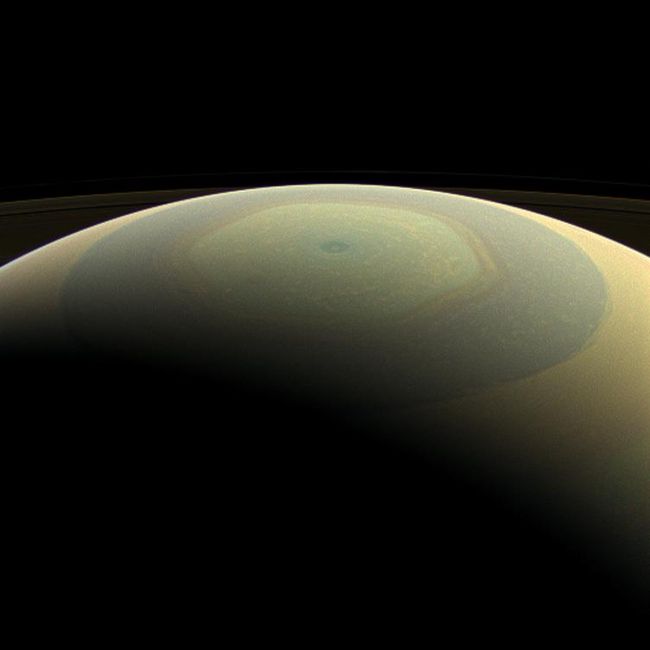Subsurface vortexes could be behind Saturn's mysterious hexagon
By Doris Elin Urrutia an hour ago
Saturn's bold rings are not its only signature feature.
Saturn also boasts a six-sided feature at its north pole, which scientists first noticed when NASA's Voyager 2 spacecraft visited Saturn in 1981. Saturn's hexagon is mesmerizing but also odd: the strange phenomenon only appears at the planet's north pole. In a new study, a researching duo investigated the dynamics of Saturn's churning gas to figure out what sorts of planetary fluid dynamics are creating this mystifying structure.
Last year, Rakesh Yadav and Jeremy Bloxham from the Department of Earth and Planetary Sciences at Harvard University in Cambridge, Massachusetts, performed a monthlong computer simulation to understand the physics behind Saturn's hexagon.
According to their paper, atmospheric flows within Saturn create large and small vortexes near the ringed planet's north pole. A strong horizontal jet that runs about 60 degrees latitude above the equator gets pinched and confined by these vortexes, which defines the rim of the hexagon.

NASA's Cassini spacecraft captured this natural-color view of Saturn's north pole at a distance of
approximately 611,000 miles (984,000 kilometers) away, on July 22, 2013.
(Image credit: NASA/JPL-Caltech/Space Science Institute)
One of the main points of the paper, according to Yadav, is that the vortexes do exist, but churn deep beneath the cloud tops and are therefore mostly invisible to spacecraft that have flown over Saturn like Voyager 2 and, more recently, NASA's Cassini mission. After the Voyager 2 data came back to Earth, scientists hypothesized that the hexagon could have been caused by subsurface cyclones like this new study suggests.
More:
https://www.space.com/saturn-hexagon-subsurface-vortexes.html
